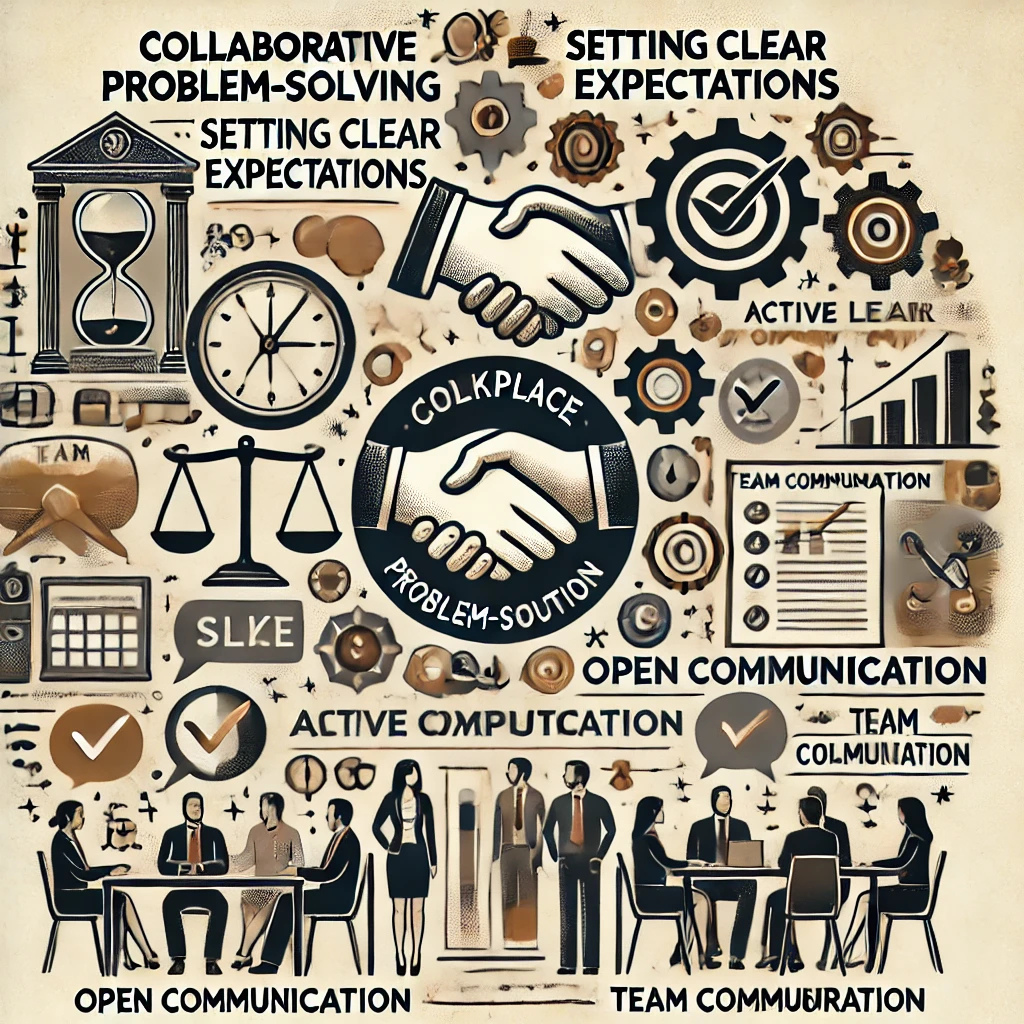Navigating Conflict in the Workplace
Effective Conflict Resolution Techniques for Leaders
Conflict arises from differences in opinions, values, and goals among team members. While conflict can lead to negative consequences such as decreased productivity and low morale, effective conflict resolution can turn disputes into opportunities for growth and improvement. Leaders play a crucial role in navigating these conflicts, utilizing techniques that promote understanding, collaboration, and positive outcomes. This article explores effective conflict resolution techniques that leaders can implement to foster a harmonious workplace environment, emphasizing the importance of proactive strategies and a supportive culture.
It can stem from various sources, including miscommunication, differing priorities, or interpersonal tensions. Understanding the nature of conflict is essential for leaders as they approach resolution. Conflict can manifest in many forms, such as personal disputes, team disagreements, or clashes over ideas and strategies.
It is vital to recognize that conflict is not inherently negative; it can stimulate creativity and drive innovation when managed constructively. For instance, differing viewpoints can lead to richer discussions and more innovative solutions. The key lies in how leaders address these conflicts, which can either mitigate or exacerbate the situation. Leaders who view conflict as a potential catalyst for change are better positioned to navigate disputes effectively.
Techniques for Conflict Resolution
1. Active Listening:Active listening is a foundational skill in conflict resolution. Leaders should encourage all parties to express their perspectives without interruption. By validating each person’s feelings and viewpoints, leaders can foster an environment of respect and understanding.
For example, a leader might say, "What I hear you saying is..." to confirm understanding. This approach not only helps clarify misunderstandings but also makes team members feel heard and valued, paving the way for resolution (Multani, 2022)
2. Open Communication: Leaders should create a safe space for team members to discuss their concerns openly. This can be facilitated through regular check-ins or conflict resolution meetings. Clear communication helps to clarify misunderstandings and align goals.
This might include regular team meetings, one-on-one sessions, or anonymous feedback tools. By fostering a culture where feedback is welcomed and encouraged, leaders can prevent many conflicts from escalating (Lehmann-Willenbrock, Allen, & Vugt, 2020)
3. Collaborative Problem-Solving: Leaders should promote a collaborative approach to problem-solving, where all parties work together to find a mutually agreeable solution. This technique involves brainstorming possible solutions, considering the needs and interests of each party, and striving for a win-win outcome.
One effective method for collaborative problem-solving is the use of joint action plans. In this approach, conflicting parties come together to outline their shared goals and agree on the steps needed to achieve them. This not only resolves the current conflict but also builds a framework for future collaboration (Jyung, Lee, Park, Cho, & Choi, 2020).
4. Setting Clear Expectations: Leaders should ensure that team members have a clear understanding of their responsibilities and the organization’s goals. By establishing clear guidelines and expectations, leaders can reduce the likelihood of misunderstandings and conflicts.
Tools such as job descriptions, performance metrics, and regular reviews can help clarify expectations. Additionally, providing training on team dynamics and conflict resolution can equip employees with the skills needed to navigate potential issues (Divett, 2020)
5. Mediation: By guiding the conversation and helping both sides understand each other’s perspectives, leaders can help reach a resolution. A structured mediation process typically involves setting ground rules for the discussion, allowing each party to present their viewpoint, and then working together to identify potential solutions. This method not only resolves the immediate conflict but also teaches team members valuable negotiation skills (Meshram, Shrivastava, & Jaiswal, 2021)

Navigating conflict in the workplace is a critical skill for leaders. By employing effective conflict resolution techniques such as active listening, open communication, collaborative problem-solving, setting clear expectations, and mediation, leaders can create a positive workplace culture. Addressing conflicts constructively not only enhances team dynamics but also contributes to overall organizational success. As conflicts arise, leaders who are equipped with these techniques will be better positioned to guide their teams toward resolution and foster an environment of collaboration and respect. Ultimately, effective conflict resolution is not just about resolving disputes; it's about building stronger teams and a more resilient organization. By prioritizing conflict resolution as a key leadership skill, organizations can ensure they are prepared to meet the challenges of a dynamic workplace.
References
1. Divett, M. (2020). Team dynamics within activity-based working. Journal of Facilities Management, ahead-of-print. doi.org/10.1108/JFM-10-2019-0054. [team dynamics].
2. Jyung, C.-Y., Lee, Y., Park, S., Cho, E., & Choi, R. (2020). Factors affecting employees’ problem-solving skills in technology-rich environments in Japan and Korea. Sustainability, 12(17), 7079. doi.org/10.3390/su12177079. [problem-solving].
3. Lehmann-Willenbrock, N., Allen, J., & Vugt, M. (2020). The origins and evolutionary significance of team meetings in organizations.doi.org/10.1108/S1534-085620200000020001. [team meetings].
4. Meshram, M., Shrivastava, P., & Jaiswal, A. (2021). Negotiation skills & collective bargaining. doi.org/10.22271/ed.book.1299. [negotiation skills].
5. Multani, N. (2022). Active listening. doi.org/10.13140/RG.2.2.26280.85762. [Active listening].